UZAY
Communication Systems
KKS Antenna
(Global Positioning System Antenna)
KKS Antenna is an equipment included in the global positioning system developed for İMECE Satellite. It provides:
- It covers the E1, L2 and L5 frequency bands in GNSS systems.
- It is broadband in frequency and has circular (LHCP or RHCP) polarization.
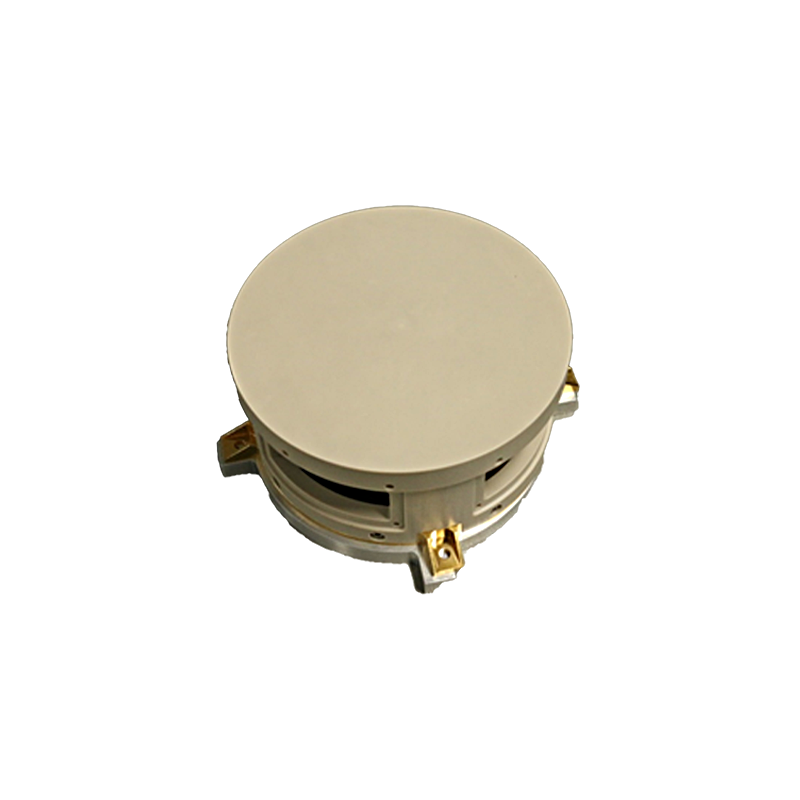
KKS Antenna Features
Key Features
KKS Antenna equipment is included as 2 pieces in the Global Positioning System equipment developed for the IMECE Satellite. The operating frequency band range is 1100-1600 MHz. It offers >7 dBiC gain at right-angle viewing angles. It is designed with circular polarization and has a protective radome.
Budget
Mass 0.490 kg
Size: 163 mm x 163 mm x 69 mm (Width x Length x Height)
Interfaces
RF
Heritage / Platforms
İMECE, AYAP-1
Environments / Reliability
Thermal: -20°C to +50°C
Vibration
Shock
KKS LNA
(Global Positioning System Low Noise Amplifier)
KKS LNA is an equipment within the global positioning system developed for İMECE Satellite. It provides:
- It covers the E1, L2 and L5 frequency bands in GNSS systems.
- Provides over 18 dB gain in the E1, L2 and L5 frequency bands.
- Has noise figure values below 2 dB in the E1, L2 and L5 frequency bands.
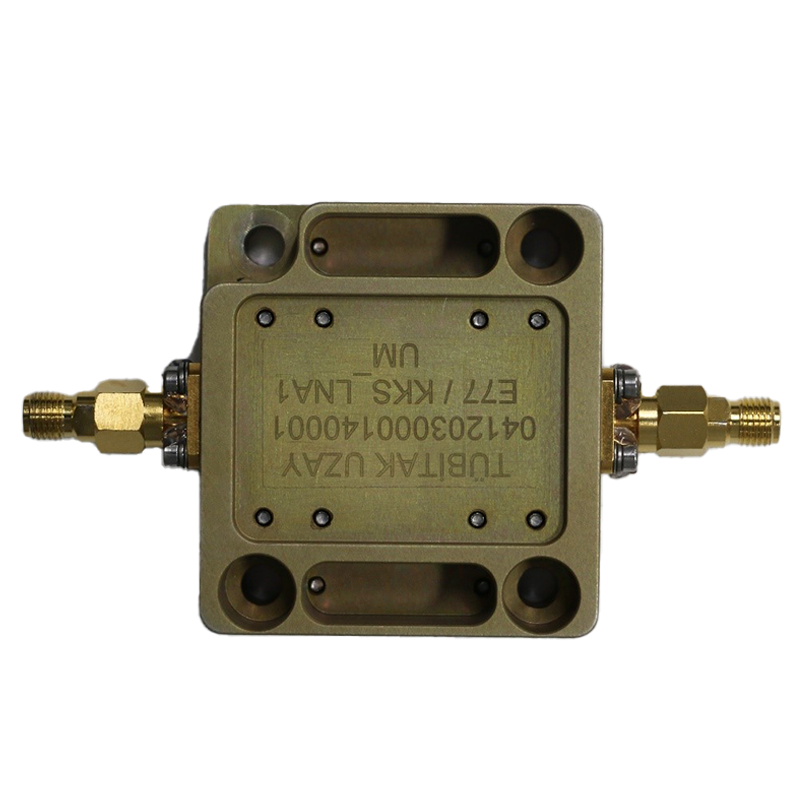
KKS LNA Features
Key Features
- There are 2 KKS LNA equipments included in global positioning system which is developed for İMECE Satellite.
- It is located between the KKS Antennas and the KKS RF Power Distributor Splitter equipment.
- It receives the DC supply voltage it needs from the KKS RF Power Distributor Splitter Unit and filters the signal it receives from the KKS Antenna, amplifies it, and transmits it to the subsequent KKS RF Power Distributor Splitter equipment.
- It has a built-in DC voltage regulator.
- It has high gain value and low noise figure value and is compatible with 50 ohm system at input and output ports.
Budget
Mass 0.082 kg
Supply: 5V
Power: 0.6 W (nom)
Size: 60 mm x 52 mm x 20 mm (Width x Length x Height)
Interfaces
RF, DC
Heritage / Platforms
İMECE, AYAP-1
Environments / Reliability
Thermal: -20°C to +50°C
Vibration
Shock
MIL-STD-461F EMC
KKS RF GDB
(Global Positioning System RF Power Distributor Splitter)
KKS RF GDB is an equipment within the global positioning system developed on the İMECE Satellite. It provides:
- Selects which KKS LNA equipment will be used to receive signals on the GPS equipment and enables it.
- Divides the signal power received from the selected GPS LNA equipment into 3 equal parts.
- Transfers the signal power divided into 3 equal parts to the GPS Electronic Unit.
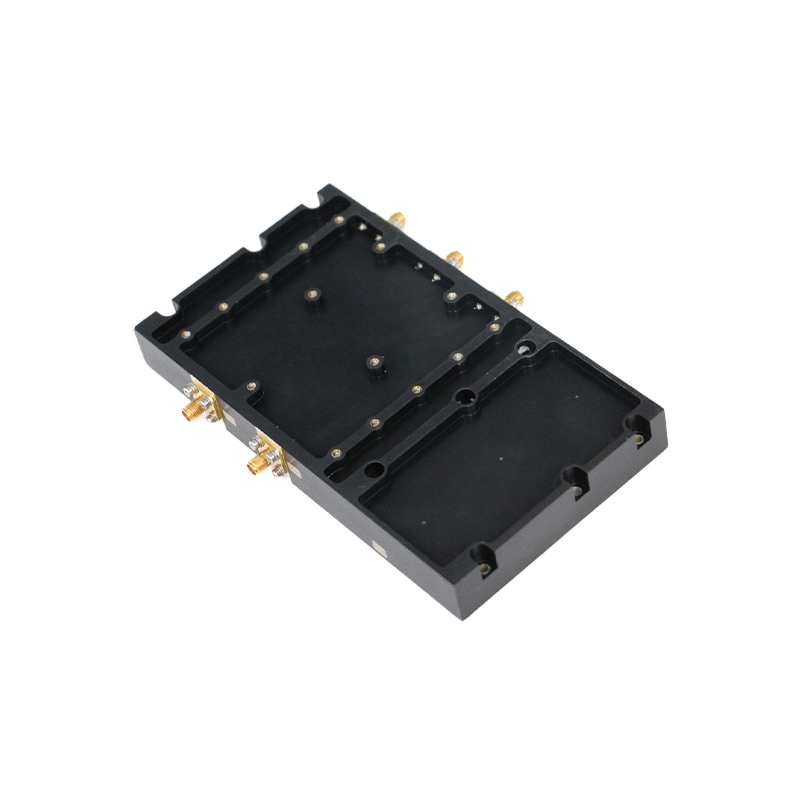
KKS RF GDB Features
Key Features
The GPS RF GDB equipment is included in the global positioning system equipment developed for the İMECE Satellite. It is located between GPS LNAs and GPS Electronic Unit equipment. It receives the DC supply voltage from the GPS Electronic Unit equipment, feeds itself and feeds the GPS LNA, which will receive the signal from the GPS Antenna. It divides this signal power into 3 equal parts and transmits it to the GPS Electronic Unit equipment that comes after it. It has a built-in DC voltage regulator. It has 100kRad resistant RF switch and is compatible with 50 ohm system in input and output ports.
Budget
Mass x.xx kg
Supply: 5V
Power: 0.25 W (nom)
Size: XX mm x YY mm x ZZ mm (Width x Length x Height)
Interfaces
RF, DC
Heritage / Platforms
İMECE, AYAP-1
Environments / Reliability
Thermal: -20°C to +50°C
Vibration
Shock
MIL-STD-461F EMC
S-Band Transponder
(Global Positioning System Low Noise Amplifier)
The S-Band Transponder is being developed for deep-space missions which will be used for telemetry/telecommand communications and ranging . The modular design of the S-Band Transponder allows it to be tailored to the needs of various space platforms.
The S-Band Transponder Equipment provides the following features to the satellite flight segment:
- CCSDS compatible telemetry and telecomand communications
- ECSS-E-ST-50-02C compatible ranging and doppler tracking
- Compliant with the frequency bands allocated by ITU
- RS-422 and CAN interfaces
- Modular architecture with independent Baseband, Low Noise Amplifier, RF Precoat, Solid State RF Power Amplifier and Cavity filter units
- Failure tolerant architecture based on redundancy and hardware protection.
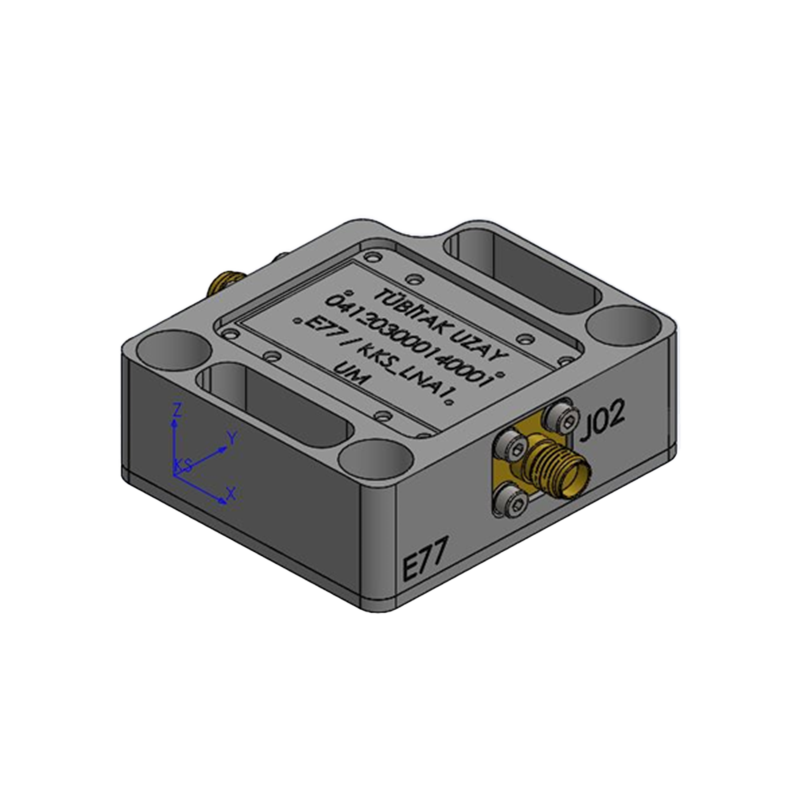
S-Band Transponder Features
Key Features
- Operating Frequency Range:
Transmission Line 2200-2290 MHz
Receiving Line 2025-2120 MHz - Receiver Data Rate: Up to 100 kb/s
- Transmitter Data Rate:
Low data rate mode: Up to 1Mb/sec.
High data rate mode: Up to 4 Mbps - Modulation Type:
Receiver PCM/BPSK/PM, SC-BPSK
Transmitter: PCM/BPSK/PM, PCM/QPSK/PM, SC-BPSK, SC-QPSK - Receiver Noise Figure: <4 dB (-20°C to +50°C)
- Transmitter RF Output Power: 4W (-20°C to +50°C)
- Modes: TM/TC, TM/TC+Ranging, Only Ranging
- Coherent and Non-coherent operational modes
Budget
Supply: 28V nominal (16V - 40V Input voltage range )
Power Consumption: <30W@25C (When both receiver and transmitter are active)
Size: 304 mm x 216 mm x 96 mm (W x L x H)
Mass 4 kg
Interfaces
Control: CAN
Data RS-422
RF: SMA, 50 Ohm
Heritage / Platforms
AYAP-1
Environments / Reliability
Thermal:-20°C to +50°C
Vibration
Shock
EMI/EMC: MIL-STD-461F
Lifetime: 3 years
S-Band Transceiver
(Global Positioning System RF Power Distributor Splitter)
The S-Band Transceiver Equipment is a communication equipment for low-altitude satellites that provides command/spacemetry communication between the satellite and the ground. Its main task is to perform uplink/downlink communication physical layer functions and to provide command and measurement functions within the on-board satellite operation. Thanks to its modular equipment structure, the S-Band Transceiver Equipment can be adapted to different space platform requirements.
The S-Band Transceiver Equipment provides the following features to the satellite flight segment:
- CCSDS compatible telemetry and telecomand communications
- Compliant with the frequency bands allocated by ITU
- RS-422 and CAN interfaces
- Modular architecture with independent Baseband, RF Frontcoat, Solid State RF Power Amplifier and Cavity filter units
- Failure tolerant architecture based on redundancy and hardware protection.
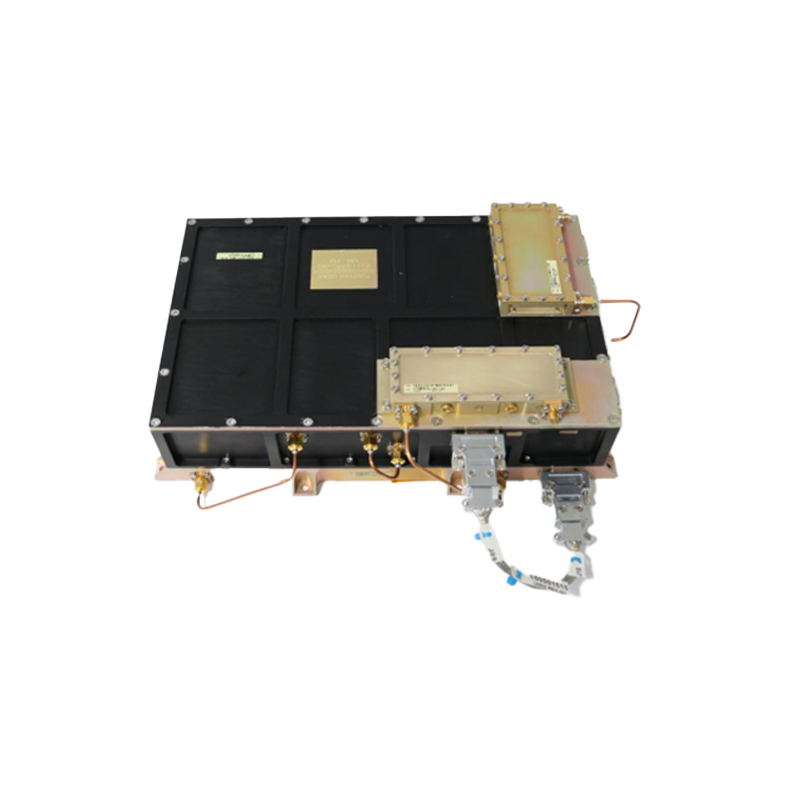
S-Band Transceiver Features
Key Features
- Operating Frequency Range:
Transmission Line 2200-2290 MHz
Receiving Line 2025-2120 MHz - Data Rates:
Receiver Data Rate: 40 kb/s (Data rate can be adjusted according to the requirements.)
Transmitter Data Rate: 50 kb/s and 2 Mb/s (Data rate can be adjusted according to the requirements.) - Modulation Type: SC-BPSK
- Channel Coding: RS (223,255)
- Receiver Noise Figure: <4 dB (-20°C to +50°C)
- Transmitter RF Output Power: 4W (-20°C to +50°C)
- Receiver sensitivity -107 dBm@1E-6 BER
- Input Dynamic Range: -60dBm to -107dBm
- Carrier Tracking Capability: ±50KHz
Budget
Supply: 28V nominal (16V - 40V Input voltage range)
Power Consumption: <30W@25C (When both receiver and transmitter are active)
Size: 304 mm x 216 mm x 96 mm (W x L x H)
Mass 4 kg
Interfaces
Control: CAN
Data RS-422
RF: SMA, 50 Ohm
Heritage / Platforms
İMECE
Environments / Reliability
Thermal: -20 to +50 C
Vibration
Shock
EMI/EMC: MIL-STD-461
Lifetime: 7 years
SRX-YA
(S-Band Receiving Patch Antenna)
The S-Band Receiving Patch Antenna is an equipment used in S-Band communication on İMECE Satellite. It features:
- It is used as a receiving antenna in uplink for S-Band communication between the TM/TC subsystem and the ground station.
- It has maximum gain at boresight and right-hand circular polarization.
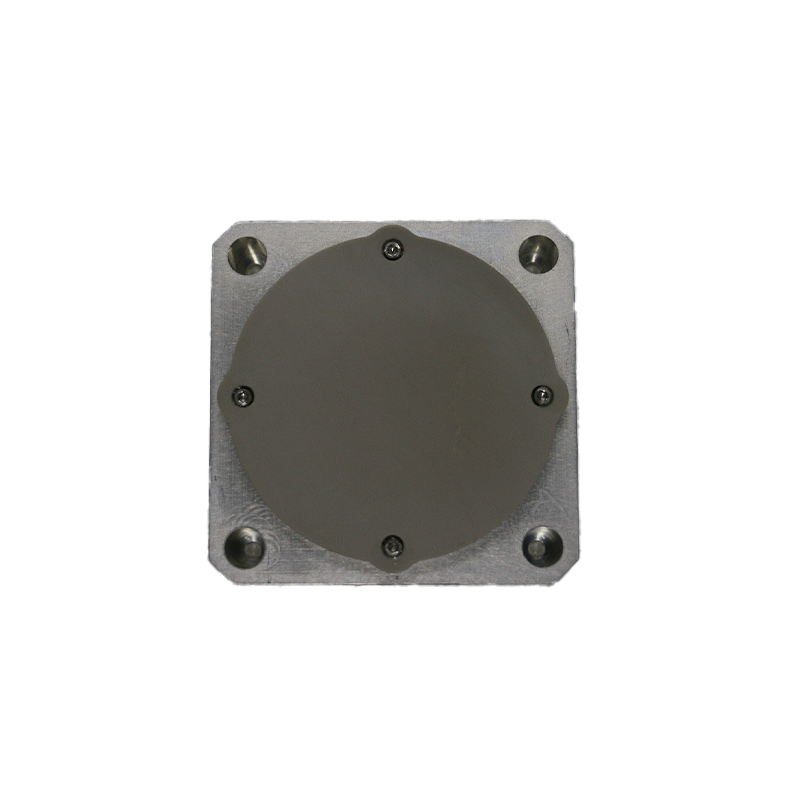
SRX-YA Features
Key Features
- The S-Band Receiving Patch Antenna is used as a receiver antenna in uplink for S-Band communication between the TM/TC subsystem and the ground station on İMECE Satellite.
- The operating frequency is in the range 2025-2110 MHz.
- The S-Band Receiving Patch Antenna has a maximum gain (>6 dBiC) at boresight and circular (LHCP or RHCP) polarization and has a protective radome on.
- Its axial ratio is better than 1 dB and return loss is lower than -10 dB withing the bandwidth of 25 MHz.
- It has a gain of 0 dBiC within an elevation angle of 120°.
Budget
Mass 0.177 kg
Dimensions: 92 mm x 92 mm x 27 mm (W x L x H)
Interfaces
RF
Heritage / Platforms
İMECE, AYAP-1
Environments / Reliability
Thermal: -50°C to +100°C
Vibration
Shock
SRXYH
(S-Band Receiver Redundancy Ring)
The S-Band Receiver Redundancy Ring is the configuration part located between the S-Band Receiver Patch Antennas and the S-Band Receiver Unit on the İMECE Satellite. It provides:
- The S-Band Receiver Redundancy Ring transmits the signal from ground station received by the S-Bant Receiver Patch Antennas to the S-Band Receiver Unit.
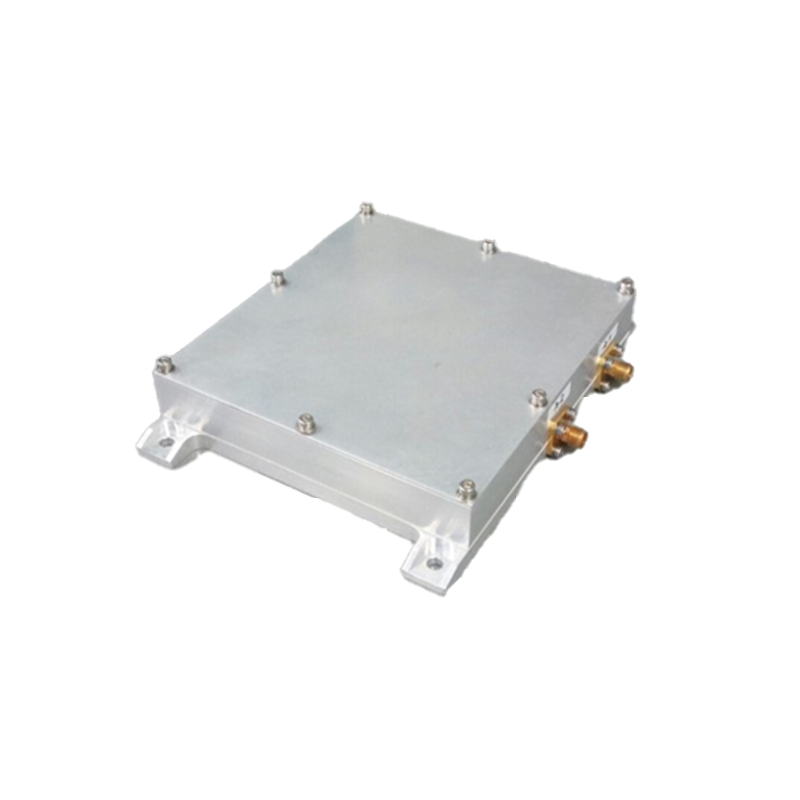
SRXYH Features
Key Features
The S-Band Receiver Redundancy Ring is a completely passive configuration element located between the S-Band Receiver Patch Antennas and the S-Band Receiver Unit on the IMECE Satellite. The function of the S-Band Receiver Redundancy Ring is to send the RF signal from the ground station, received by the S-Band Receiver Patch Antennas, to the S-Band Receiver Unit. The S-Band Receiver Redundancy Ring equipment has RF connections with the S-Band Receiver Unit and the S-Band Receiver Patch Antennas. The operating center frequency of the S-Band Receiver Redundancy Ring is 2061 MHz.
Budget
Mass 0.297 kg
Size: 131 mm x 146 mm x 27 mm (W x L x H)
Interfaces
RF
Heritage / Platforms
İMECE, AYAP-1
Environments / Reliability
Thermal: -20°C to +50°C
Vibration
Shock
STX-QFH
(S-Band Transmitting QFH Antenna)
The S-Band Transmitting QFH Antenna is an equipment used in the S-Band communication on İMECE Satellite. It features:
- It transmits signals transmitted from the S-Band Transmitter equpment to the ground station.
- The S-Band Transmitting QFH Antenna has left-hand circular polarization (LHCP).
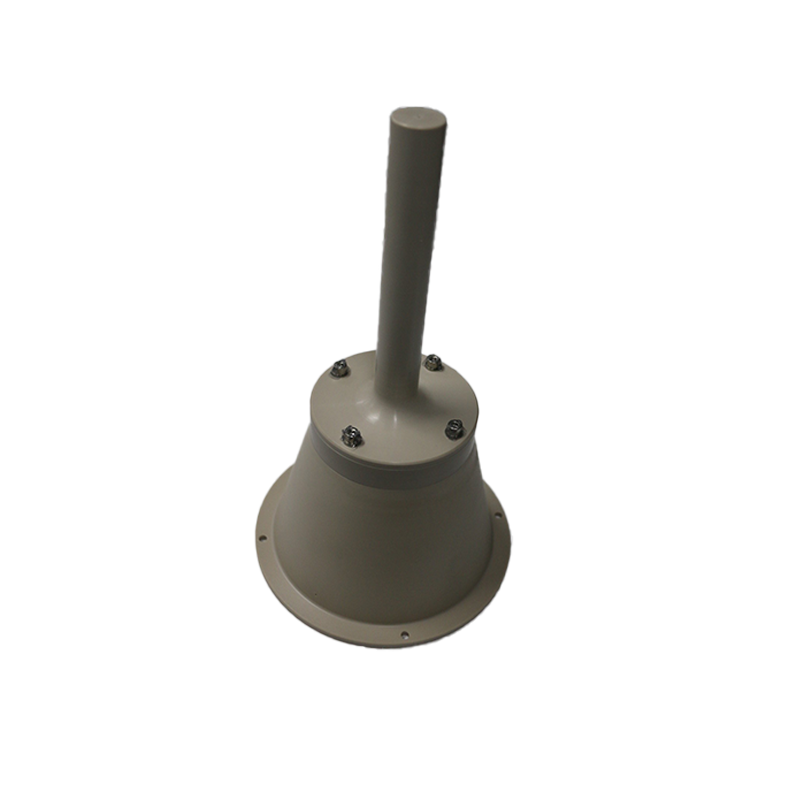
STX QFH Features
Key Features
- The S-Band Transmitting QFH Antenna is used as a transmitting antenna in downlink for S-Band communication between the TM/TC subsystem and the ground station on the İMECE Satellite.
- The operating frequency is in the range 2200-2290 MHz.
- It has an iso-flux radiation pattern and presents a gain of >5 dBiC at dedicated elevation angles.
- It has circular (LHCP or RHCP) polarization and has a protective radome on.
Budget
Mass 0.348 kg
Size: 149 mm x 149 mm x 253 mm (W x L x H)
Interfaces
RF
Heritage / Platforms
İMECE, AYAP-1
Environments / Reliability
Thermal -50°C to +100°C
Vibration
Shock
STX-YA
(S-Band Transmitting Patch Antenna)
The S-Band Transmitting Patch Antenna is an equipment used in S-Band communication on İMECE Satellite. It features:
- It is used as a transmitting antenna in downlink for S-Band communication between the TM/TC subsystem and the ground station.
- It has maximum gain at boresight and left-hand circular polarization.

STX-YA Features
Key Features
- The S-Band Transmitting Patch Antenna is used as a transmitting antenna in downlink for S-Band communication between the TM/TC subsystem and the ground station on İMECE Satellite.
- The operating frequency is in the range 2200-2290 MHz.
- The S-Band Receiving Patch Antenna has a maximum gain (>6 dBiC) at boresight and circular (LHCP or RHCP) polarization and has a protective radome on.
- Its axial ratio is better than 1 dB and return loss is lower than -10 dB withing the bandwidth of 25 MHz.
- It has a gain of 0 dBiC within an elevation angle of 120°.
Budget
Mass 0.168 kg
Dimensions: 92 mm x 92 mm x 27 mm (W x L x H)
Interfaces
RF
Heritage / Platforms
İMECE, AYAP-1
Environments / Reliability
Thermal: -50°C to +100°C
Vibration
Shock
STXYH
(S-Band Transmitter Redundancy Ring)
The S-Band Transmitter Redundancy Ring is the configuration part located between the S-Band Transmitter Patch Antenna, the S-Band Transmitter QFH Antenna, and the S-Band Transmitter unit on the İMECE Satellite. It provides:
- The S-Band Transmitter Redundancy Ring is the equipment that allows the RF signal coming from the S-Band Transmitter Unit to be divided in certain ratio between the S-Band Trasmitter Patch Antenna and the S-Band Transmitter QFH Antenna.
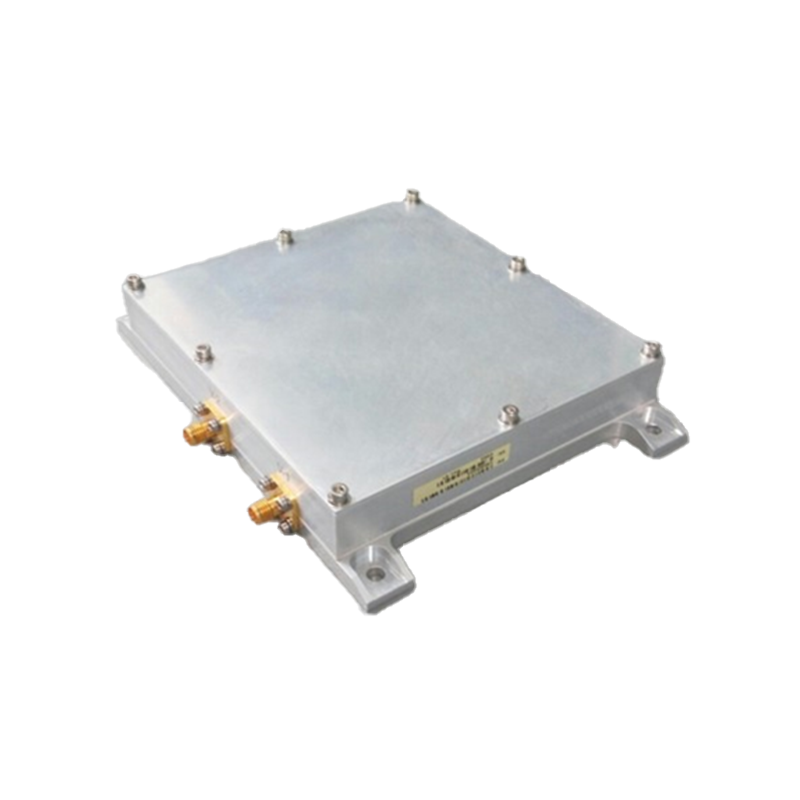
STXYH Features
Key Features
- The S-Band Transmitter Redundancy Ring is a configuration part consisting of completely passive elements located between the S-Band Transmitter Patch Antenna, S-Band Transmitter QFH Antenna and S-Band Transmitter Unit on the IMECE Satellite.
- The role of the S-Band Transmitter Redundancy Ring is to ensure that the power of the RF signal from the S-Band Transmitter Unit is divided between the S-Band Transmitter Patch Antenna and the S-Band Transmitter QFH Antenna in certain proportions.
- The S-Band Transmitter Redundancy Ring equipment has RF connections with the S-Band Transmitter Unit, S-Band Transmitter Patch Antenna and S-Band Transmitter QFH Antenna.
- The S-Band Transmitter Redundancy Ring operating frequency range is 2200 MHz to 2290 MHz.
Budget
Mass 0.293 kg
Size: 131 mm x 146 mm x 27 mm (W x L x H)
Interfaces
RF
Heritage / Platforms
İMECE, AYAP-1
Environments / Reliability
Thermal: -20°C to +50°C
Vibration
Shock
X-Band Transmitter
(10Mb/sec.)
The X-Band Transmitter is a high data rate communication equipment developed for deep-space missions. Its task is to transmit payload data from the satellite to the earth. The modular design of the X-Band Transmitter allows it to be tailored to the needs of various space platforms.
The X-Band Transmitter Equipment provides the following features to the satellite flight segment:
- CCSDS compatible high data rate RF communications (up to 10Mb/s)
- Compliant with the frequency bands allocated by ITU
- CAN, MIL-STD1553B and LVDS interfaces
- Modular architecture with independent Baseband, Frequency Upconverter, Local Oscilator and Solid State RF Power Amplifier units
- Failure tolerant architecture based on redundancy and hardware protection.
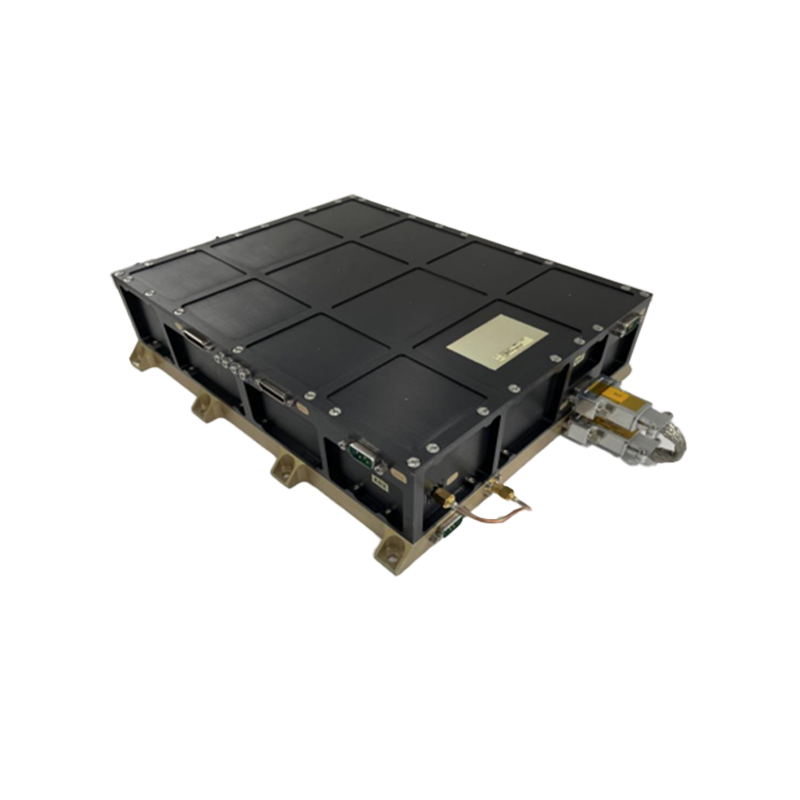
X-Band Transmitter Features
Key Features
- Operating Frequency Range: 8450-8500 MHz
- Data Rate: 5 to 10 Mb/s
- Modulation Type: OQPSK
- Channel Coding: RS (223,255), CC (7,1/2), CC (7,7/8)
- RF Output Power: 10W
Budget
Supply: 28V nominal (20V - 36V input voltage range)
Power Consumption: <65W@25C
Dimensions: 290 mm x 260 mm x 80 mm (W x L x H)
Mass 4 kg
Interfaces
Control: CAN
Data: LVDS
RF: SMA, 50 Ohm
Heritage / Platforms
AYAP-1
Environments / Reliability
Thermal:-20°C to +50°C
Vibration
Shock
EMI/EMC: MIL-STD-461F
Lifetime: 5 years
X-Band Transmitter
(100 Mbps)
The X-Band Transmitter is a high data rate communication equipment developed for low-earth orbit satellites. Its task is to transmit payload data from the satellite to the earth station at high data rate. The modular design of the X-Band Transmitter allows it to be tailored to the needs of various space platforms.
The X-Band Transmitter Equipment provides the following features to the satellite flight segment:
- CCSDS compatible high data rate RF communications (100Mb/s)
- Compliant with the frequency bands allocated by ITU
- CAN and Spacewire interfaces
- Modular architecture with independent Baseband, Frequency Upconverter, Local Oscillator and Solid State RF Power Amplifier units
- Failure tolerant architecture based on redundancy and hardware protection.
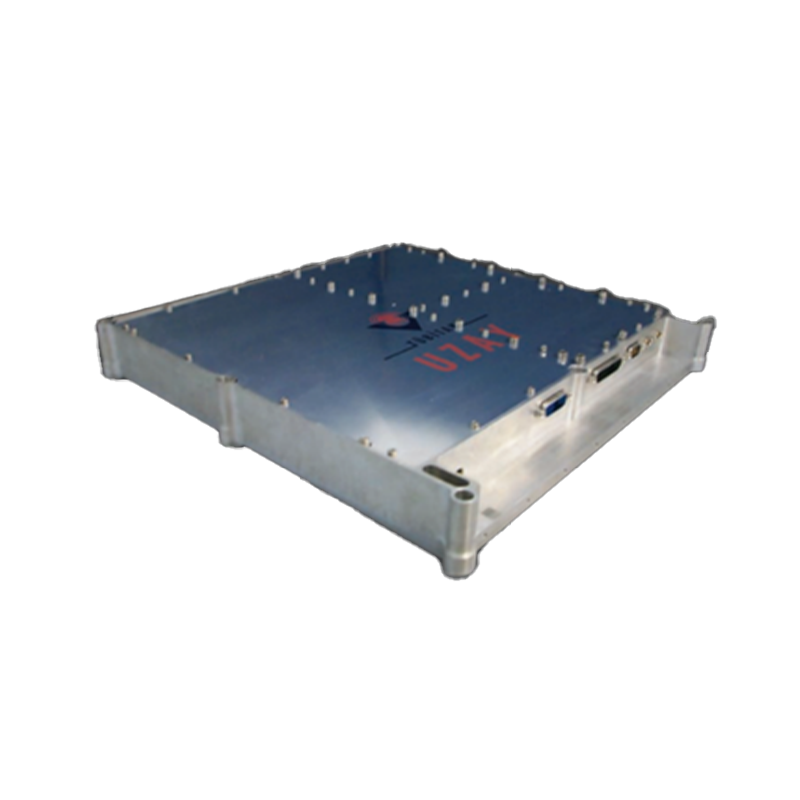
X-Band Transmitter Features
Key Features
- Operating Frequency Range: 8025-8400 MHz
- Data Rate: 100 Mb/s
- Modulation Type: OQPSK
- Channel Coding: RS (223,255), CC (7,1/2)
- RF Output Power: 10W
Budget
Supply: 28V nominal (20V - 36V input voltage range)
Power Consumption: <65W@25C
Dimensions: 290 mm x 260 mm x 80 mm (W x L x H)
Mass 4 kg
Interfaces
Control: CAN
Data: Spacewire
RF: SMA, 50 Ohm
Heritage / Platforms
RASAT, GÖKTURK-2, İMECE
Environments / Reliability
Thermal: -20°C to +50°C
Vibration
Shock
EMI/EMC: MIL-STD-461
Lifetime: 7 years
X-Band Transmitter
(320 Mbps)
The X-Band Transmitter is a high data rate communication equipment developed for low-earth orbit satellites. Its task is to transmit payload data from the satellite to the earth station at high data rate. The modular design of the X-Band Transmitter allows it to be tailored to the needs of various space platforms.
The X-Band Transmitter Equipment provides the following features to the satellite flight segment:
- High-speed RF communication compliant with CCSDS standards (320 Mbps)
- Compliant with the frequency bands allocated by ITU
- CAN, MIL-STD1553B and LVDS interfaces
- Modular architecture with independent Baseband, Frequency Upconverter, Local Oscilator and Solid State RF Power Amplifier units
- Failure tolerant architecture based on redundancy and hardware protection.

X-Band Transmitter Features
Key Features
- Operating Frequency Range: 8025-8400 MHz
- Data Rate: 320 Mb/s (Dual Channel)
- Modulation Type: OQPSK/QPSK
- Channel Coding: RS (223,255), CC (7,1/2), CC (7,7/8)
- RF Output Power: 7W (can be increased up to 10W)
Budget
Supply: 28V nominal (16V - 40V Input voltage range)
Power Consumption: <56W (-20°C to +50°C)
Dimensions: 290 mm x 260 mm x 80 mm (W x L x H)
Mass 4.06kg
Interfaces
Control: CAN, MIL-STD1553B
Data: LVDS
RF: SMA, 50 Ohm
Heritage / Platforms
İMECE
Environments / Reliability
Thermal: -20°C to +50°C
Vibration
Shock
EMI/EMC: MIL-STD-461F
Lifetime: 7 years
XTX-YOA
(Electromechanical Steerable X-Band Antenna)
The Electromechanical Steerable Antenna (ESA) is a production of the interdisciplinary cutting-edge technologies and engineering. It provides:
- High data rate transmission on LEO satellite platforms
- Download payload data from earth observation satellite platforms
- Can be used for inter-satellite communication missions
- The ability to move angularly in two rotational axes
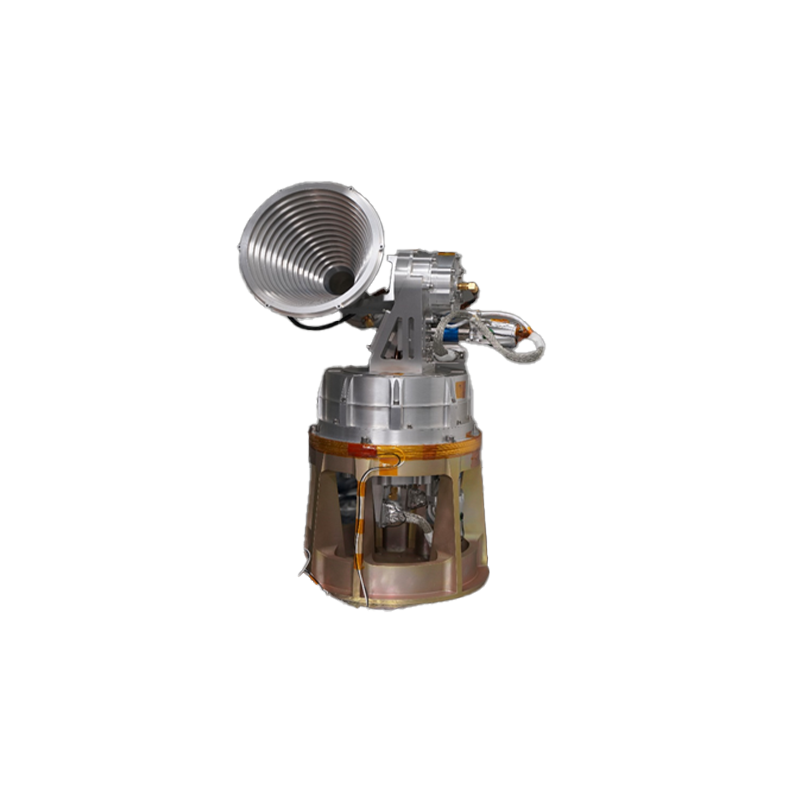
XTX-YOA Features
Key Features
- Operating frequencies are in the range 8000-8400 MHz.
- This antenna pointing mechanism can track ground station with high precision (<0.5°) and angular resolution (0.003° ) without any steering RF loss (scan loss).0) and angular resolution (0.0030) values without any RF loss.
- A high-gain (<16.4 dBiC), symmetric, and low cross-polarization radiation pattern
- Axial ratio values are below 1 dB at nadir and across the operating band
- Angular velocity <250/sec., ±270 at azimuth angles0 and elevation angles ±1100 values.
- Complies with MIL-STD-461F standards for conducted emissions, conducted susceptibility, radiated emissions, and radiated susceptibility tests, such as CE101, CE102, CS101, CS114, CS115, CS116, RE102, and RS103.
Budget
Supply: 28V unregulated
Power: 6.15W (nom), 8.3W (max)
Mass: 5 kg, ±%5 (including antenna)
Dimension (Mechanism): 192 mm x 292 mm x 440 mm (W x L x H)
Dimension (Drive Module): 165 mm x 257 mm x 58 mm (W x L x H)
Interfaces
RS-422
CAN
Heritage / Platforms
İMECE
Environmental/Reliability
Thermal: -20°C to +50°C
Vibration
Shock
EMI/EMC: MIL-STD-461
Lifetime: +5 years (more than 21,000 total cycles)
TXTX Antenna
(X-band Transmitting Isoflux Radiation Pattern Antenna)
TXTX Antenna is developed for X-band transmiting system for İMECE Satellite. It provides:
- Mid-gain antenna for X-band data transmission on LEO satellite platforms
- Download payload data from earth observation satellite platforms
- Circular polarization capability (LHCP or RHCP)
- Iso-flux radiation pattern
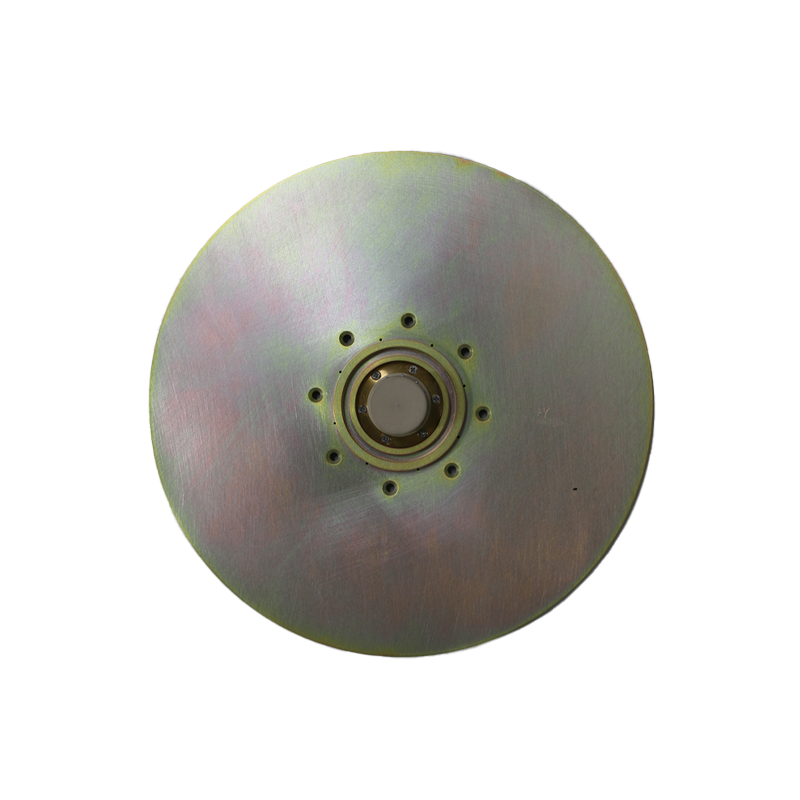
TXTX Antenna Features
Key Features
TXTX Antenna is a medium-gain product that supports the X-Band Transmitter System developed for the IMECE Satellite. The operating frequency band range is 8000-8400 MHz. It has a gain of 4-7 dBiC at specified elevation angles. It is designed with circular polarization (LHCP or RHCP) and has a protective radome.
Budget
Mass 0.11 kg
Dimensions: 172 mm x 172 mm x 29 mm (W x L x H)
Interfaces
RF
Heritage / Platforms
İMECE, AYAP-1
Environments / Reliability
Thermal: -50°C to +100°C
Vibration
Shock



